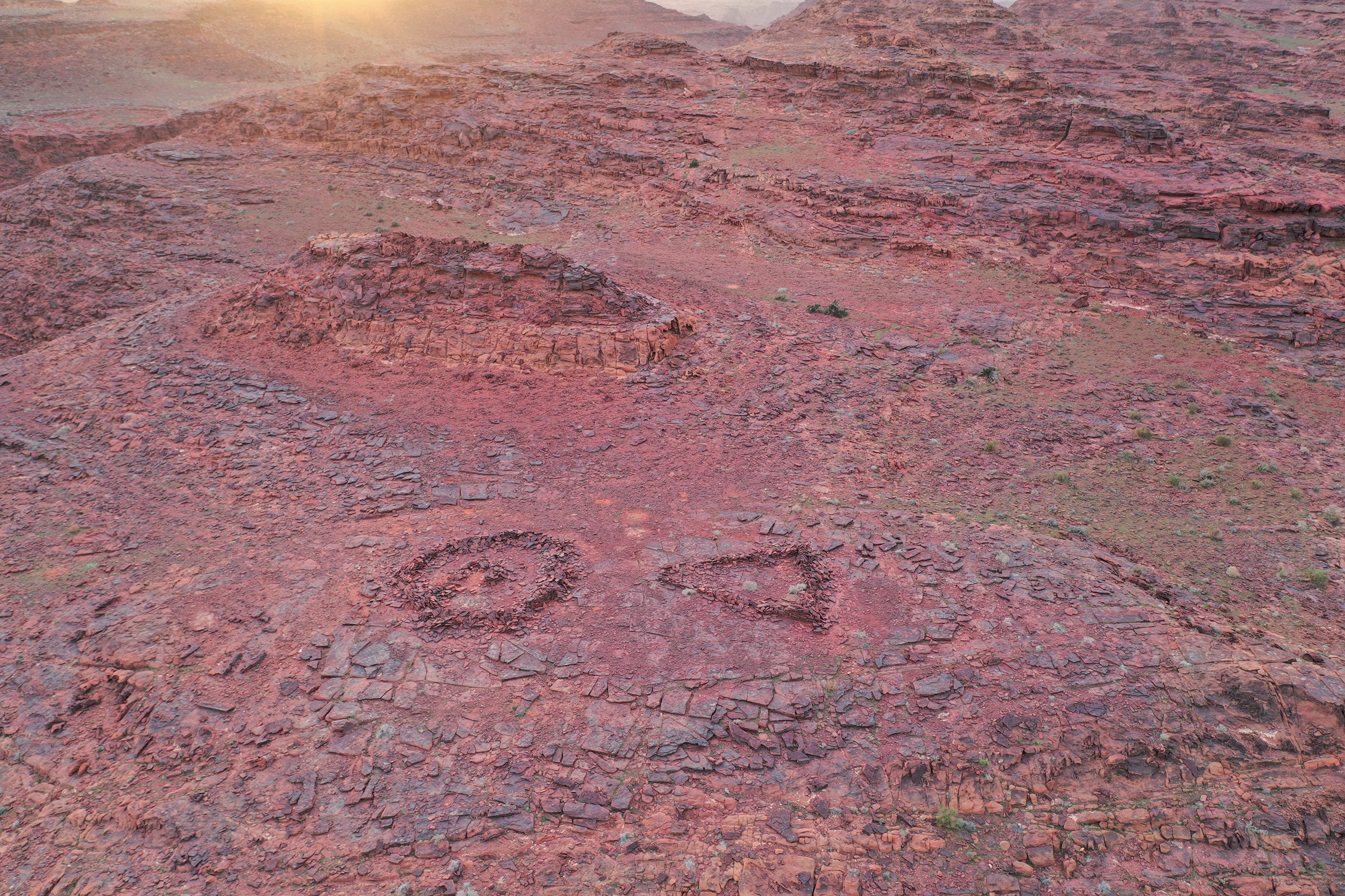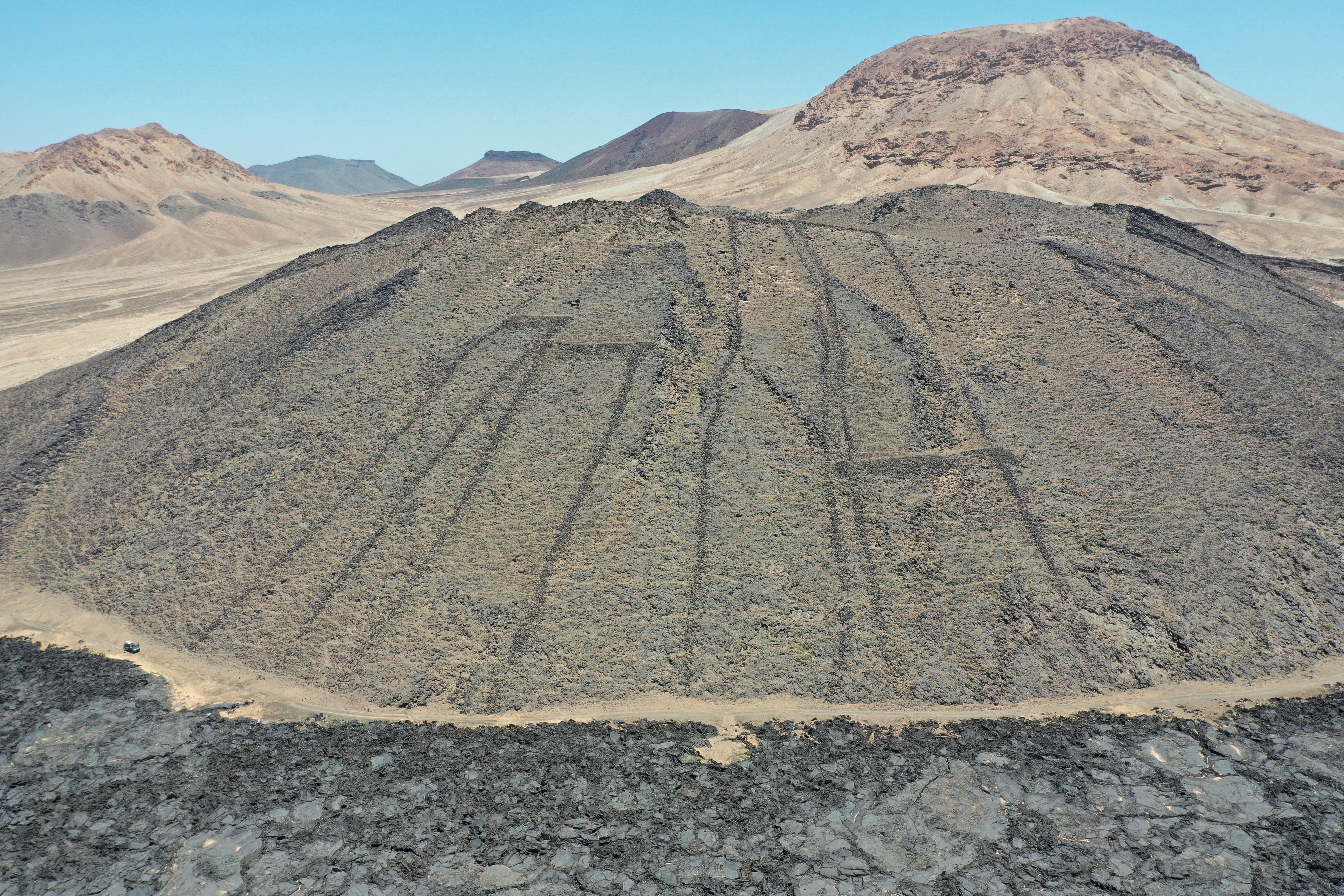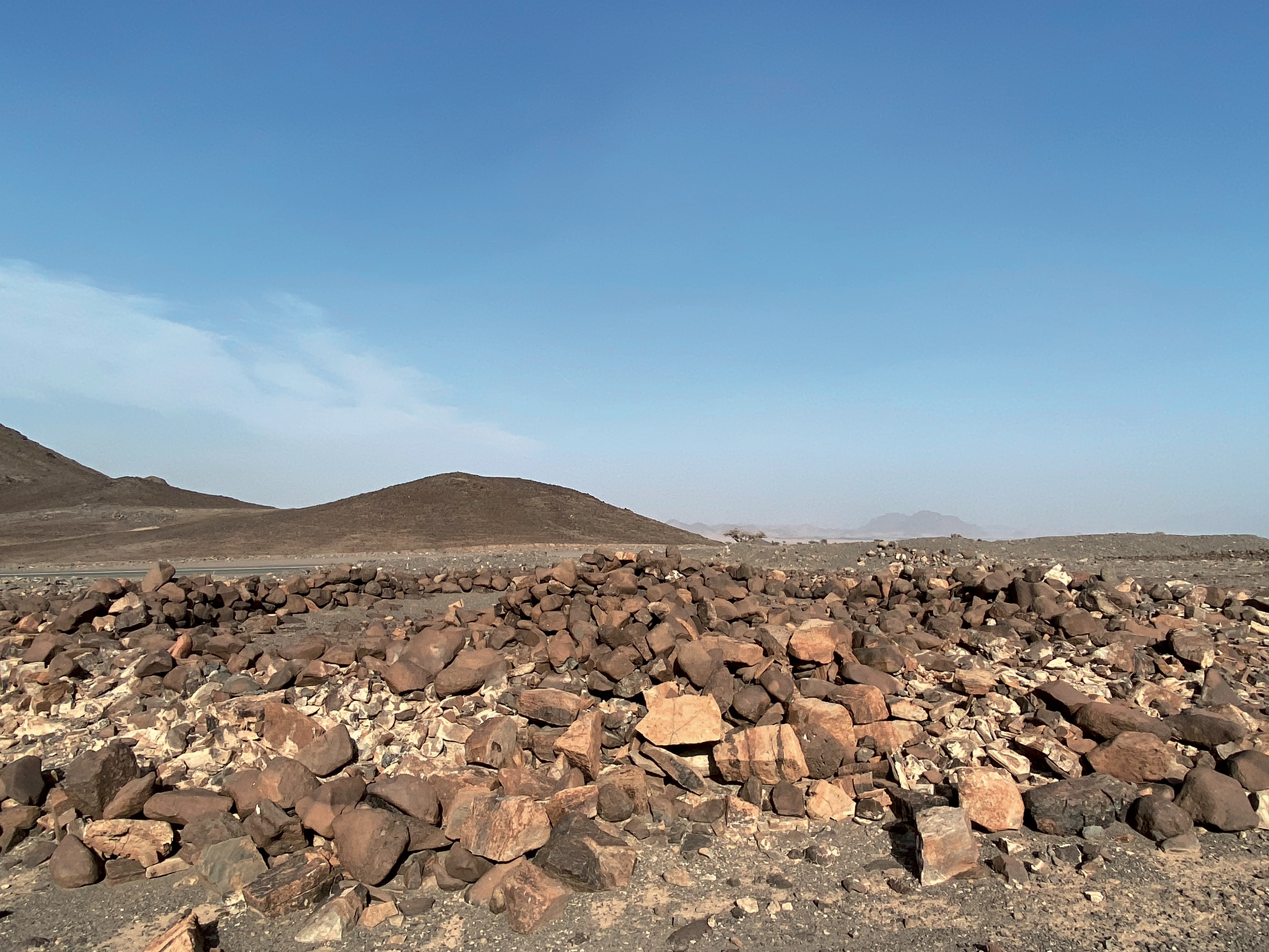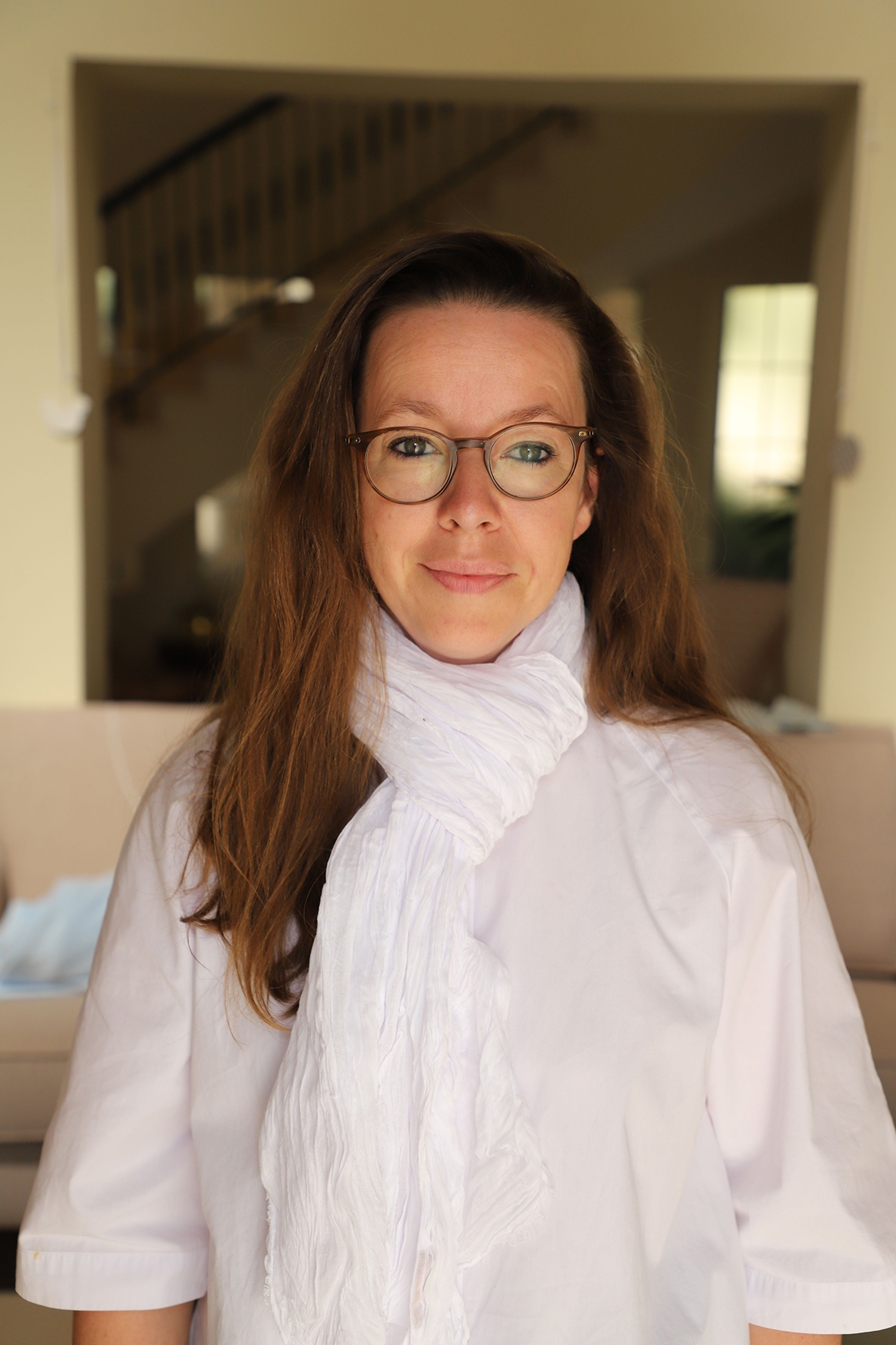Utilizing artificial intelligence to uncover the Kingdom’s ancient stone structures

KAUST researchers are using AI to study ancient stone structures in northwest Saudi Arabia. Shown here, aerial view of circular and triangular structures. Photo courtesy of Dr. Laurence Hapiot / KAUST
KAUST researchers are using artificial intelligence (AI) in the field of archaeology in Saudi Arabia, providing a detailed land survey of a historically significant but little-studied region. The results could speed up archaeological discoveries in the Kingdom, create new knowledge for the promotion of cultural heritage, and provide a methodology useful to other sectors of the economy.
The team, composed of Virgile Blua, a visiting student in the Image and Video Understanding Laboratory (IVUL); Dr. Silvio Giancola, research scientist for IVUL and the KAUST Artificial Intelligence Initiative; Dr. Laurence Hapiot, KAUST assistant professor of Practice in Archaeology, and the director of the Museum of Science and Technology in Islam; and Professor Bernard Ghanem, principal investigator for IVUL and deputy director of the AI Initiative, came together after Hapiot, who holds a PhD in archaeology from Panthéon-Sorbonne University, identified the scope for multidisciplinary collaboration. The project is funded by the Office of the President, Office of the Provost and IVUL.
The initiative is part of an emerging research field called computational archaeology, which employs high-speed computational processing methods to analyze large volumes of data. The team created a software to automate the detection of stone structures using pictures of land collected from satellite imagery. For more than a decade, archaeologists have been manually using open-access satellite images and search software such as Google Earth to find clues to the possible location of ruins or ancient civilizations, and then conduct site visits.

Aerial view of a mountain slope in the northwest of Saudi Arabia shows the presence of ancient mustatils, rectangular stone structures dating to the late 6th millennium BCE; shown here as adjacent vertical structures running from slope base to peak. Photo courtesy of Dr. Laurence Hapiot / KAUST
In this case, the KAUST team used an automated process to survey ancient walled structures called mustatils, from the Arabic word for rectangles, in northwest Saudi Arabia, as well as ruins in circular and triangular shapes. The mustatils range from a few meters to hundreds of meters in length, and date to the late 6th millennium BCE.
The approach uses a deep machine learning algorithm trained on datasets manually identified by Hapiot. Once the algorithm is trained, it is able to isolate thousands of features with similar characteristics over a wide area. When a new structure is detected, the tool can convert the relevant pixels into geodetic coordinates using a global positioning system (GPS), and assemble them into an online map and database for analysis. The technology could be used for other surveying exercises to detect any large object in an open landscape.
"Artificial intelligence and machine learning help to rapidly interpret vast amounts of data from archaeological sites across the Kingdom. The Saudi Heritage Commission welcomes KAUST's efforts to use the latest technology for studying ancient hilltop stone structures," said Dr. Jasir Al-Harbash, CEO of the Heritage Commission, Ministry of Culture. "This may help us learn more about their function and distribution, as well as the ancient populations that built them."

Ground view of mustatils, ancient rectangular stone structures, shown here in partial collapse in the northwest of Saudi Arabia. Photo courtesy of Dr. Laurence Hapiot / KAUST
The vast area under study in the Kingdom is estimated to have thousands of these monumental stone structures. With Saudi Arabia covering roughly two million square kilometers, traditional search and detection methods could take months or years to complete, compared to the five hours it takes the team's AI-enabled strategy.

Portrait of Dr. Laurence Hapiot, KAUST Archaeological Research and Cultural Outreach Fellow. Photo courtesy Dr. Laurence Hapiot
KAUST's new solution can not only speed up that process, but also answer questions about the size, volume and distribution of ancient remains, or assess if the presence of a structure means there is likely to be a similar or related structure in the vicinity. A data-driven and machine learning tool of such archaeological importance could help fulfill the Kingdom's Vision 2030 goals by recording, preserving and highlighting the country's unique heritage. This would also serve to support the development of a tourism economy.
"This project demonstrates how KAUST is a unique place for multidisciplinary research," said Hapiot. "Very few environments can promote quick integration of deep technical concepts, such as artificial intelligence, in collaboration with archaeologists. The outcome is a unique understanding of the global presence of stone structures."
Saudi Arabia's open landscape is ideal for this type of technology, which could be made available elsewhere in the region where there are similar topographical traits. Further collaboration between archaeology and AI could be initiated by either archaeologists looking for help, or data scientists aware of existing archaeological studies that might benefit from these applications.
Related links
- KAUST Impact magazine, Spring 2022 — celebrating impactful research, education and innovation across the University
-
Professor Ghanem wins 2020 Abdul Hameed Shoman Award for Arab researchers

